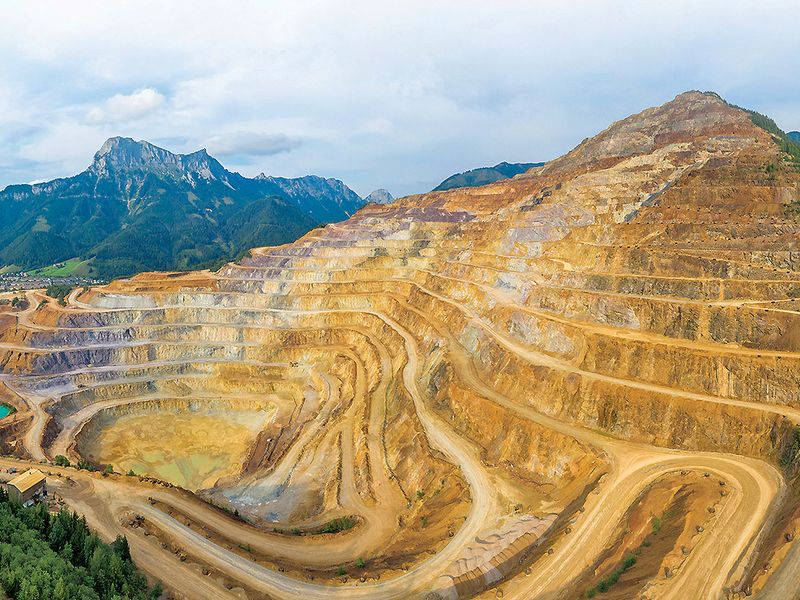
The shift to electric vehicles will mean less drilling for oil, but EVs still depend heavily on precious resources that come from deep within the Earth.
Making enough batteries to fulfill automakers’ ambitious electrification goals requires copious amounts of lithium, cobalt and other metals that aren’t readily flowing through the existing supply chain. Locating and safely extracting them are complex tasks starkly different from traditional automotive operations, and mastering those tasks will be crucial to succeeding in the EV era.
President Joe Biden is aiming for EVs to represent half of U.S. new-vehicle sales by 2030. That compares with 1.9 percent last year, according to Edmunds. Automakers have laid out their own goals, with Volvo planning to fully electrify its lineup by 2030. General Motors aspires to have a zero-emission light- vehicle portfolio by 2035, and Volkswagen has said nearly all of its vehicles will be emission-free by 2040.
Building vehicles has been the foundation of the automotive business for a century, but the absence of an established supply chain for EV batteries at this scale has pushed automakers to get involved earlier. They are partnering to open extraction sites for key battery metals such as lithium, joining consortiums to ensure the metals are sourced ethically and responsibly, working to shrink the carbon footprint of EV manufacturing, and developing plans for battery recycling and reuse.
Automakers are still a long way from reinvention, but they realize transformation is essential for competing long term, said Andy Leyland, head of strategic advisory for Benchmark Mineral Intelligence.
“It’s taken them a long time to figure that out,” he said. “It wasn’t that they wanted to do this. … They’re being forced to do it.”
Joint ventures and strategic investments across the supply chain will help automakers ensure access to sufficient materials for batteries and deepen their expertise in EV development, said Sam Abuelsamid, principal analyst at Guidehouse Insights.
“These companies decided: ‘Now that we’re going to go either all EV or very heavily EV in the next decade, batteries and motors need to be a core competency just as engines and transmissions for the last hundred years,’ ” Abuelsamid said.
He said the automakers’ view now is: “We can’t leave this intellectual property entirely to our suppliers, and we need to be working on this, continuously improving what we’re using to give them a competitive advantage, both in terms of performance and cost.”
As the coronavirus pandemic and subsequent microchip shortage have crippled global auto production, automakers have further grasped the value of having more control and visibility into the supply chain.
“When supply chains become too concentrated, either among too few companies or in too few geographic areas, they become very brittle, and they’re not resilient,” Abuelsamid said. “Because of the volume of [EV] materials and the mass of batteries, if you’re building millions of EVs a year, you don’t want to be shipping the materials or the batteries themselves around the world back and forth.”
That’s why automakers and battery manufacturers are building battery cell plants near vehicle assembly plants. The same will happen with raw material extraction, recycling and processing when possible, Abuelsamid said. Today, the vast majority of lithium used for batteries is mined in Australia, South America and China, but automakers and battery manufacturers are beginning to establish lithium extraction sites in the U.S.
The industry could develop closed-loop supply chains for EVs, even from state to state, as automakers and battery manufacturers continue to invest in U.S. sites, said Richard Morrison, operations manager for NeoLith Energy, a Nevada lithium extraction pilot by Schlumberger New Energy.
“If the supply of lithium material is there, we believe that a cathode manufacturing facility will eventually happen,” Morrison said. “That can really create that closed supply chain loop where the lithium is not having to traverse the globe, generating emissions along the way. We would really have a sustainable product and process from brine to the battery.”
Investments in sourcing battery metals could avoid a shortage of crucial materials as EV sales scale upward.
In July, GM agreed to a multimillion-dollar strategic investment and commercial collaboration with Controlled Thermal Resources to secure low-cost lithium from the Salton Sea, a toxic lake near California’s border with Mexico. The project is expected to yield battery-grade lithium by 2024.
Rod Colwell, CEO of Controlled Thermal Resources, predicts an inflection point around that time when global demand for lithium — a key ingredient to all proposed battery chemistries — will outweigh supply. For U.S. demand alone, Controlled Thermal Resources will not be able to produce enough battery-grade lithium, “even though this is probably one of the largest resources on the planet,” Colwell said. “It’s one of the problems we are going to try to accommodate and solve as we go.”
Establishing a lithium extraction site can take up to a decade. Current mining processes take up to two years to produce battery-grade lithium, but ongoing trials by Controlled Thermal Resources and others use a modified direct-extraction process that can yield battery-grade lithium in days or weeks.
With direct extraction and other innovations, Manish Chawla, global general manager for the industrial sector at IBM, is confident the industry will avoid a battery crisis. Investments are bound to increase significantly along with EV demand, he said.
“Lithium was sitting around in the Salton Sea for ages. Why was there no movement? Because there was no capital flowing,” Chawla said. “Need drives capital. Capital drives innovation and sustainable exploitation of resources.”

